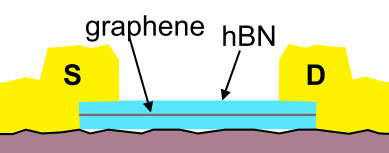| Posted: May 21, 2015 | |
Record high sensitive graphene Hall sensors |
|
| (Nanowerk Spotlight) Numerous types of magnetic field sensors are being used in various applications. The magnetic field sensor market has gained ample demand recently due to humongous increase in vehicle production, gaming consoles, consumer electronics industry, homeland security, healthcare, aerospace, the defense industry, etc. These magnetic field sensors are in very high demand for precise measurements of position, proximity and motion. | |
| The most popular types of magnetic field sensors are Hall Effect, magneto resistive and SQUID. According to recent market reports, the total shipment in the year 2013 for magnetic field sensors was estimated to be 6.5 billion units. This figure is expected to reach 9.6 billion units by 2020. From a business point of view, this market has revenues of $1.8 billion in 2014 and is likely to reach $2.9 billion by year 2020. Out of these various types of sensors, Hall Effect sensors are more cost effective, durable and can be handled with ease. | |
| The most commonly used Hall Effect devices are fabricated with silicon. The important figure of merits of Hall sensors are voltage and current – related sensitivities. | |
| These sensitivities depend on the device materials' electronic properties such as charge carrier mobility and density. However, for futuristic advanced applications higher sensitivity Hall sensors are required. | |
| The other well-known materials are based on high purity III/V semiconductors like GaAs or InAs based heterostructures. | |
| Though lot of efforts has been gone in developing sensors using these materials, sensitivity values are restricted. | |
| In new work, researchers from Germany at RWTH University and AMO GmbH Aachen have fabricated ultra-high sensitive Hall Effect sensors using single-layer graphene. | |
| The results are published in Applied Physics Letters ("Ultra-sensitive Hall sensors based on graphene encapsulated in hexagonal boron nitride"). | |
 |
|
| Schematic illustration of a cross-section of an etched and contacted graphene-hBN Hall sensor device. | |
| Graphene, a two-dimensional atomic form of carbon, is a potential candidate for highly sensitive Hall sensors because of its very high carrier mobility at room temperature and very low carrier densities. | |
| These properties make graphene a material that can outperform all currently existing Hall sensor technologies. | |
| In their device, the researchers protected the graphene from ambient contaminations by encapsulating it with hexagonal boron nitride layers – another highly promising 2D insulating material. The fabricated devices show a voltage and current normalized sensitivity of up to 3 V/VT and 5700 V/AT, respectively. | |
| These values are more than one order of magnitude above the values achieved in silicon based and a factor of two above the values achieved with the best III/V semiconductors Hall sensors in ambient conditions. | |
| In addition, these results are far better than the earlier reported graphene Hall sensors on silicon oxide and Silicon carbide substrates. | |
| This new sensitivity level will enable devices with higher precision, lower energy consumption with smaller dimensions. | |
| This work will show new light for using graphene in more commercial applications, as Hall sensors are integral part of many household appliances. | |
| The research work is supported by the EU Graphene Flagship project (Contract No. NECT-ICT-604391) and the ERC (GA-Nr. 280140). | |
|
By Dr. Abhay Sagade, Dept. of Engineering, University of Cambridge
|
|
|
Become a Spotlight guest author! Join our large and growing group of guest contributors. Have you just published a scientific paper or have other exciting developments to share with the nanotechnology community? Here is how to publish on nanowerk.com. |
|
